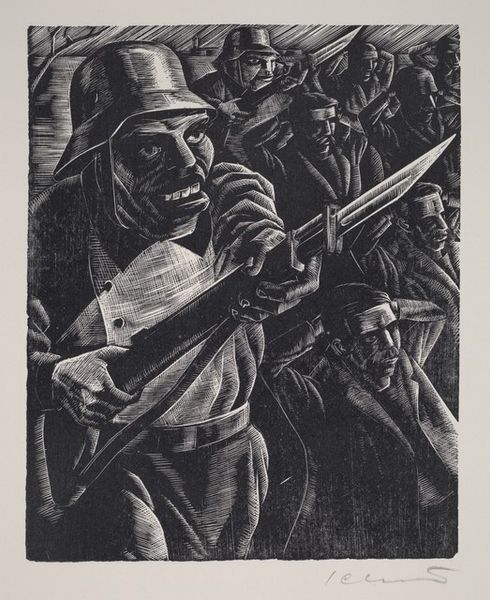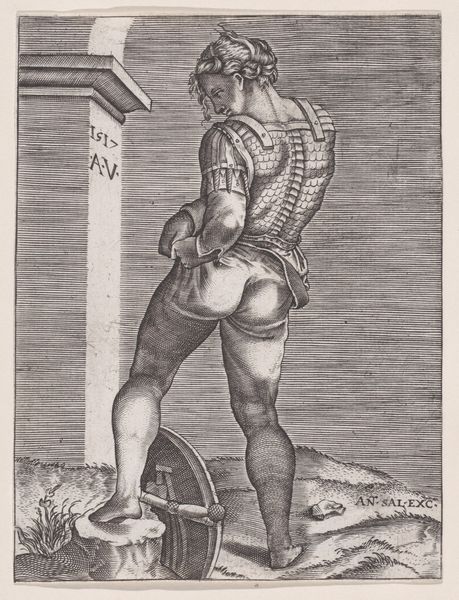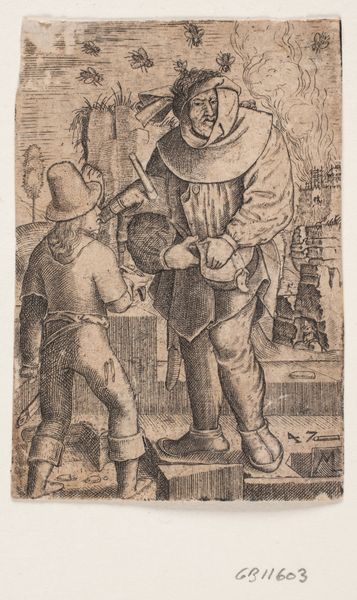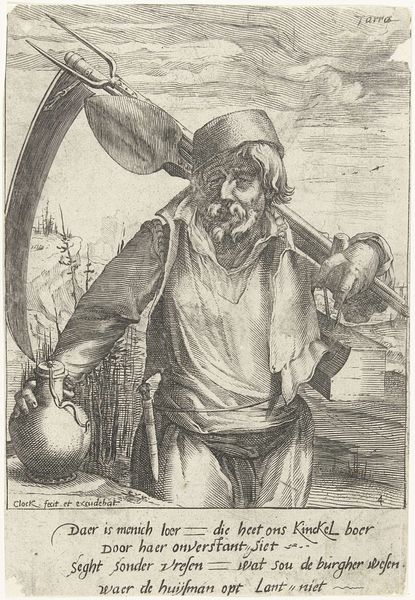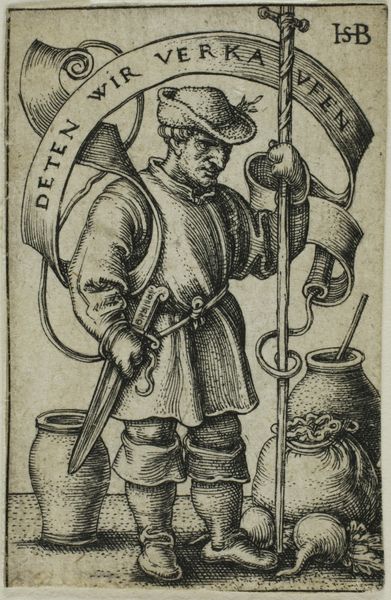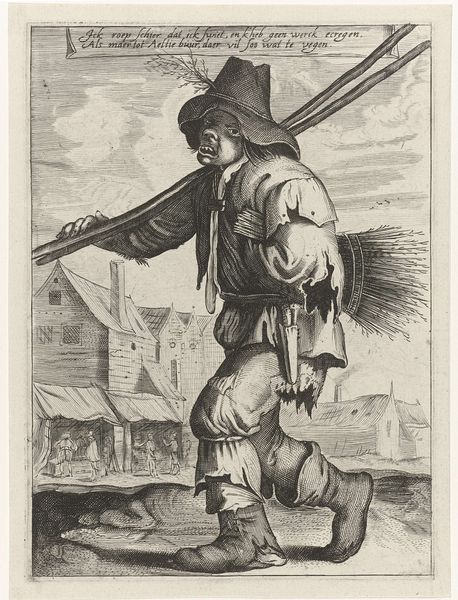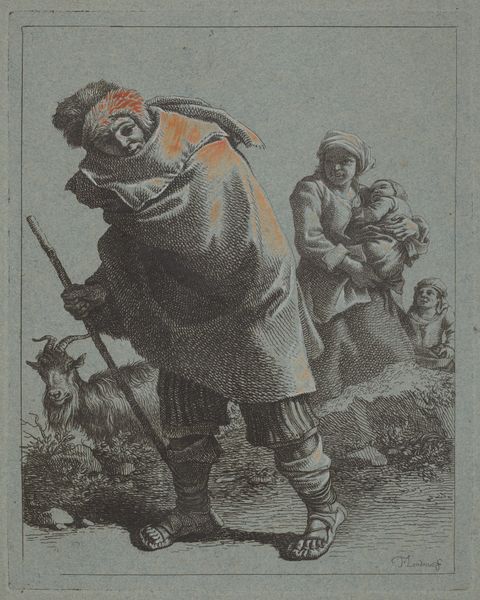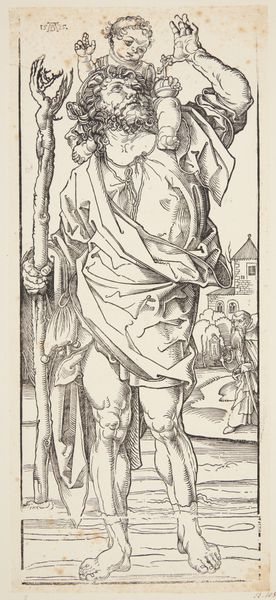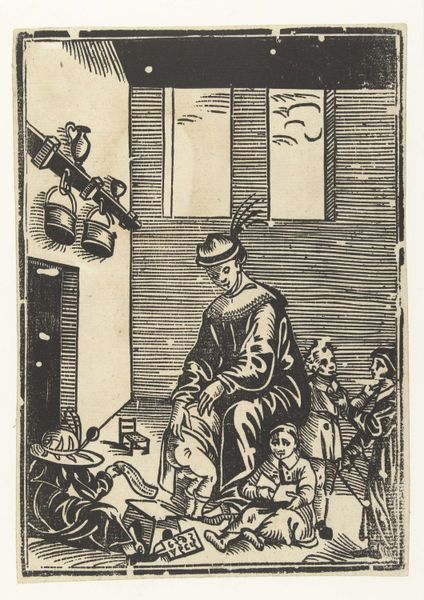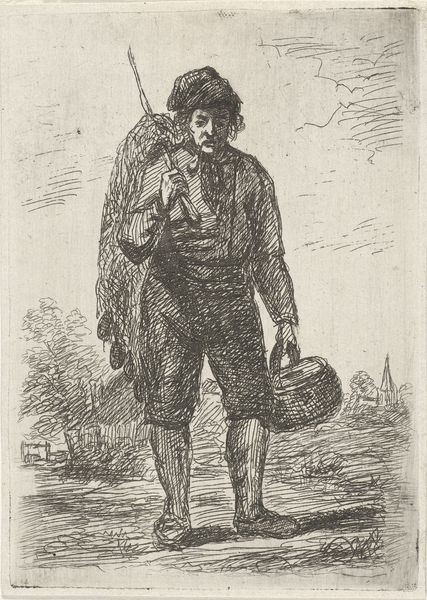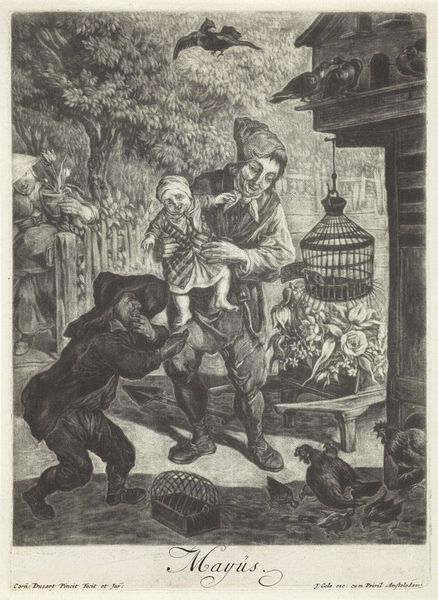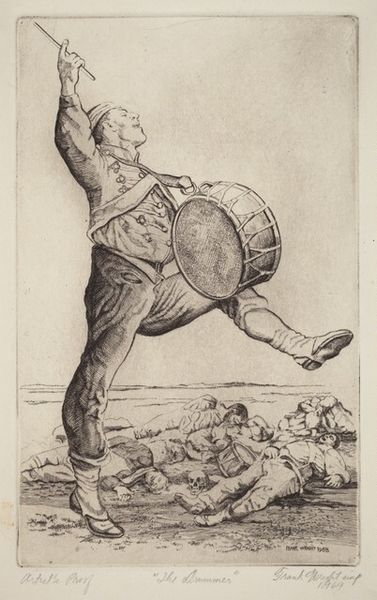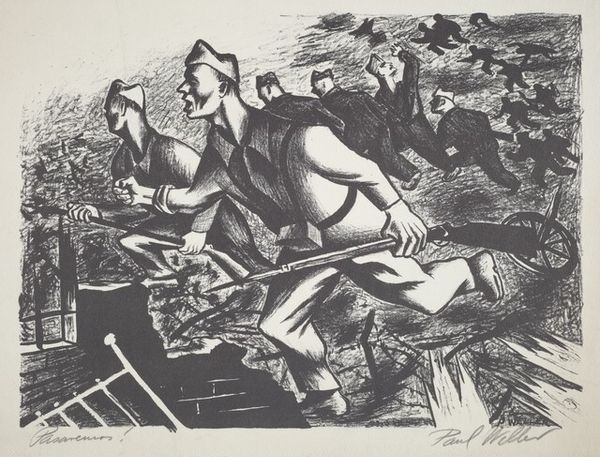
print, woodcut
#
portrait
#
narrative-art
# print
#
caricature
#
figuration
#
woodcut
#
russian-avant-garde
Copyright: National Gallery of Art: CC0 1.0
Curator: This striking image is a woodcut simply titled "Russian Soldier" by Solomon Borisovich Judovin. The date of its creation is unknown, but it is considered part of the Russian avant-garde movement. Editor: It exudes such overwhelming power and intensity. The sheer scale of the soldier compared to the rest of the imagery—it feels deliberately imposing, a psychological tool as much as an artistic choice. Curator: Observe how Judovin utilizes the stark contrast of black and white to carve out texture and depth, particularly in the soldier's fur coat and the background elements. The sharp angles of the buildings and the diagonal lines suggesting rain or motion, create a sense of dynamism and perhaps unrest. The diagonal line is key here. Editor: Precisely! Consider the symbolism embedded within the soldier’s attire—the fur hat adorned with the red star. This becomes a potent marker of identity and ideology. Beyond mere portraiture, the image resonates with narratives of revolution, strength, and possibly oppression, depending on the viewer’s cultural or political position. The gaze of the man is somewhat indifferent, I sense no humanity but determination. Curator: Let’s examine how Judovin establishes a relationship between the central figure and background. In the background are other active scenarios that feel intertwined with the subject, like small pockets within one encompassing narrative—war itself—or society at war. We can examine each part within the piece—cannon, building, church, the soldiers… And notice how everything comes into relation through proximity. Editor: Each of those elements is a visual language, echoing through time. Cannons represent force and technological might. Churches denote history, belief and culture. Soldiers evoke conflict and expansion, and these elements, when carefully constructed, can speak across centuries. Curator: Yes, and by limiting his tonal range, the artist focuses attention to surface and depth through technique and form. Each angled stroke provides form in his body; a means to dissecting and assembling through material. Editor: In a very profound way. We feel its continued reverberations even now. It’s a potent example of how visual language is used to shape and reinforce narratives, making us pause and think about our connections with this complex legacy. Curator: I agree completely, by focusing our attentions to form and material, the artist amplifies its message with very minimal distraction, while the images we see have an ongoing relevance that changes how each viewer absorbs the work.
Comments
No comments
Be the first to comment and join the conversation on the ultimate creative platform.
